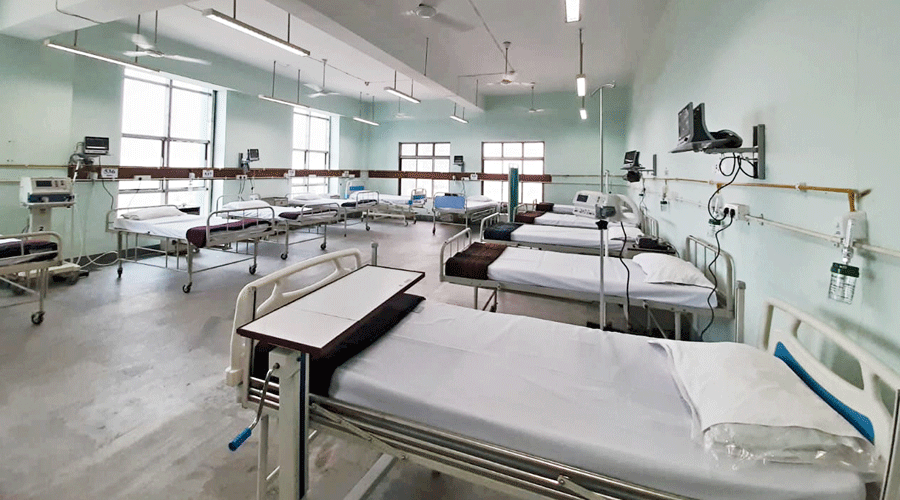The number of beds available at emergency departments accounted for only 3-5 per cent of total hospital beds in the country, says a report that accessed the prevailing status of 100 emergency and injury care centres in government and private hospital settings.
The report titled 'Emergency and Injury Care at Secondary and Tertiary Level Centres in India', prepared by the Department of Emergency Medicine, AIIMS was submitted to Niti Aayog.
As per the report, most of the hospitals lacked presence of general doctors, specialists and nursing staff dedicated for emergency departments vis-a-vis the average footfall of patients, even though the hospitals as such, had sufficient overall numbers of required human resource.
The report assessed the prevailing status of 100 emergency and injury care centres in government and private hospital settings in 28 states and 2 union territories of India, in addition to 34 district hospitals.
Amongst the critical infra-related quality parameters assessed in the emergency departments (EDs), the following were important deficiencies: absence of point of care lab (73 per cent), demarcated triage area (65 per cent), police control room (56 per cent), separate access for ambulance (55 per cent) and adequate spacing for emergency department (52 per cent).
The report said, emergency and injury cases annually accounted for 9-13 per cent of all patients presenting to a health facility and 19-24 per cent of admissions in government hospitals and 31-39 per cent admissions in private hospitals.
Emergency care can be defined as the delivery of time-sensitive interventions needed to avert death and disability and for which delays of hours can worsen prognosis or render care less effective.
The report noted that while compliance with availability of overall recommended biomedical equipment and critical equipment were largely found satisfactory at all private hospitals (86-93 per cent) and government medical college hospitals (68 per cent), deficiencies were found largely in smaller government hospitals (45-60 per cent).
Noting that since it is essential to have the complete list of all recommended emergency medicines 24*7 in the emergency departments, the report said assessment done for this aspect revealed that only 9 per cent of all hospitals fulfilled this criterion.
According to the report, many government medical colleges lacked common HDU (55 per cent), Cardiac ICU (55 per cent) and Neuro ICU (55 per cent). In addition, they also lacked facilities for Coronary Artery By-pass Graft (55 per cent), Cardiac Cath Labs (30 per cent) and interventional radiology (40 per cent), it said.
The report pointed out that most of the hospitals did not have a dedicated blood bank in the emergency department nor an existing standard protocol for massive blood transfusion. It also said that the patient disposition time for the sickest group (red zone) was high at government medical colleges (90 minutes) vis- -vis private hospitals (15 minutes).
The reasons for this delay amongst others were due to: high patient load, lack of in-house specialists in the ED, need for multiple cross referrals, with an overarching lack of a dedicated department for emergency services, it added.
While 91 per cent of hospitals had in-house ambulances, the report said trained paramedics needed to assist ambulance services were present only in 34 per cent.
The report pointed out that only 19 per cent hospitals had a mobile stroke/STEMI (for heart attack) program, with only 4 per cent having a mobile stroke unit. Specifically, equipment deficiencies pertained largely to the category of pediatric-care (75 per cent), equipment pertaining to Airway, breathing, circulation and general categories had deficiencies pertaining to a few sets of specific equipment (10-72 per cent), it said.
Violence between relatives of the care-seekers and health care providers were noticed by 22-47 per cent of hospitals, with higher representations from government hospitals, the report said.
Niti Aayog member V K Paul in the Foreword of the report highlighted the importance for India to embark towards creating a world-class, efficient, professional, integrated emergency-care system, that is enabled by technology, for the care of any victim of accident, emergency or trauma in any part of the country.
He has pointed out that the assessment conducted in this pan-India study would be a key starting point for these deliberations.
 Wednesday, 22 January 2025
Wednesday, 22 January 2025









